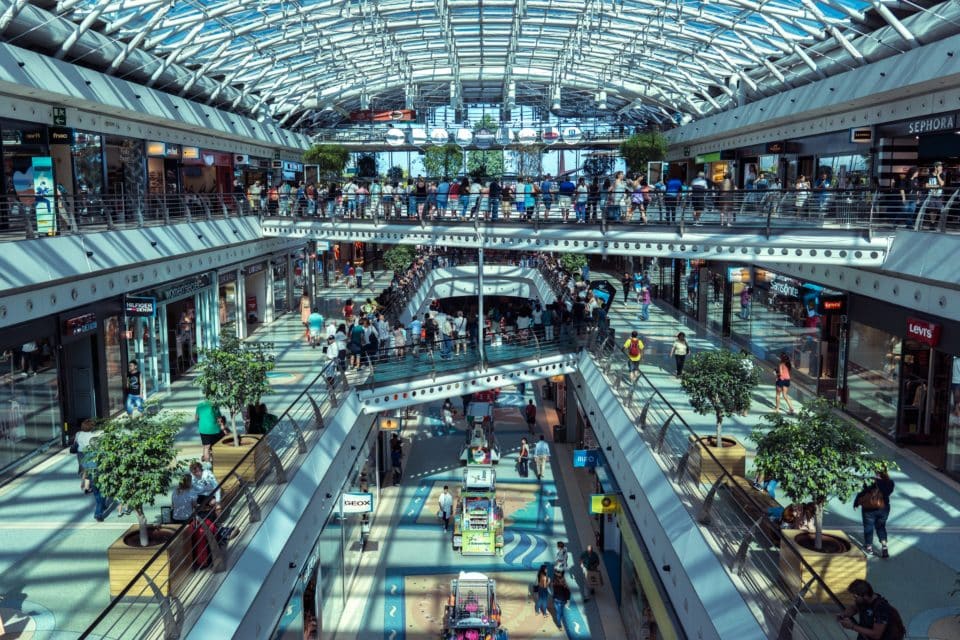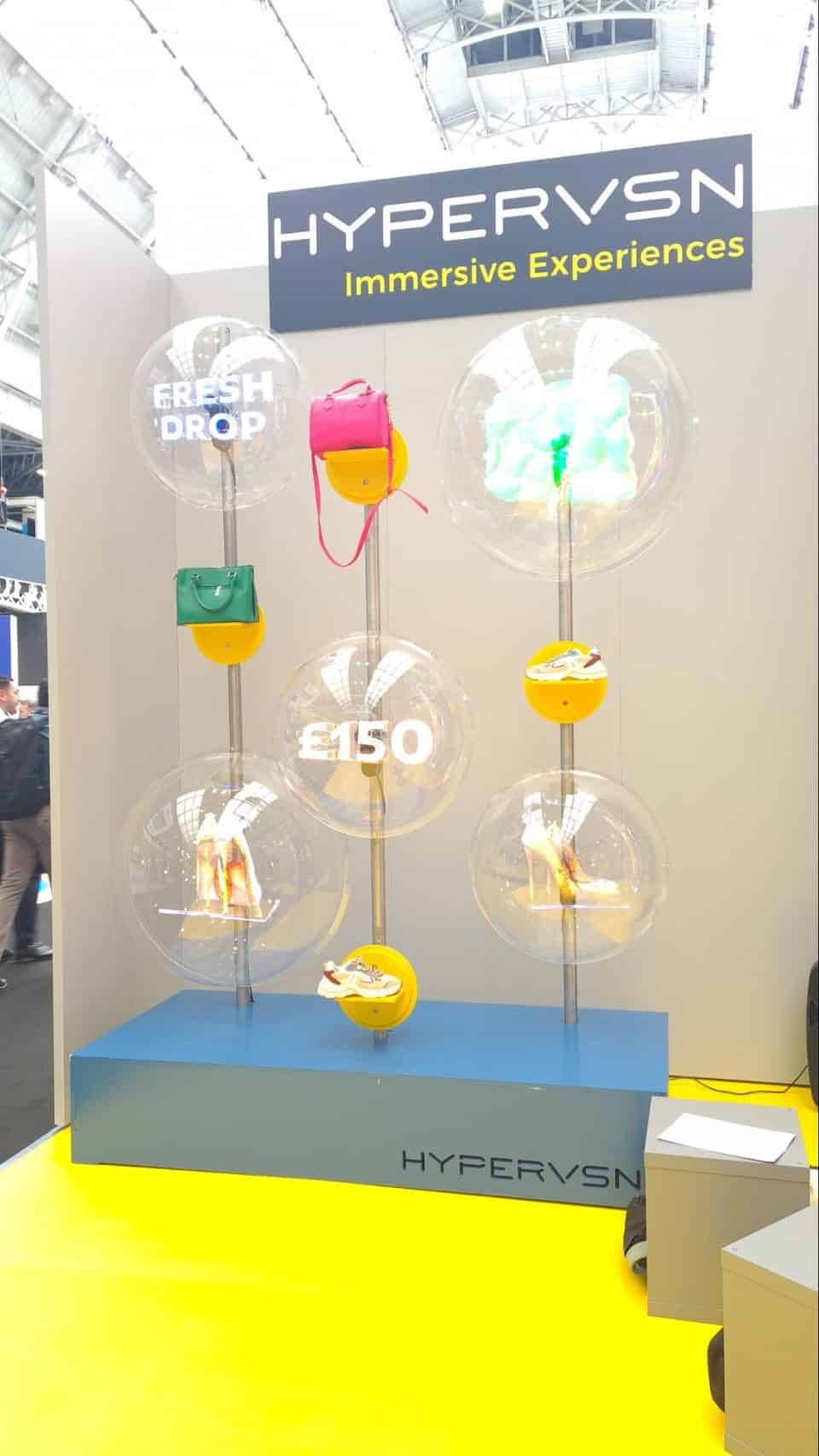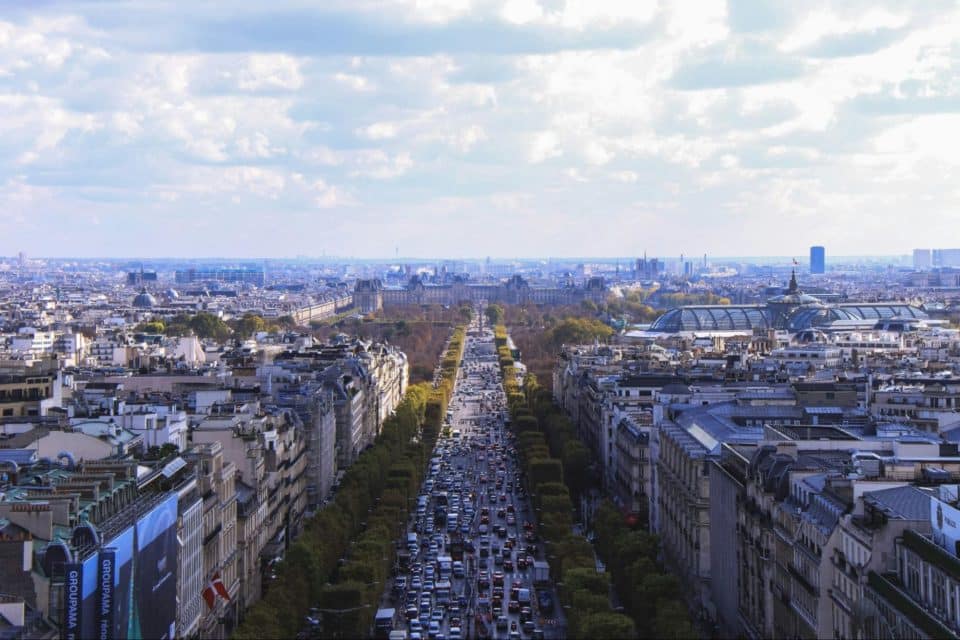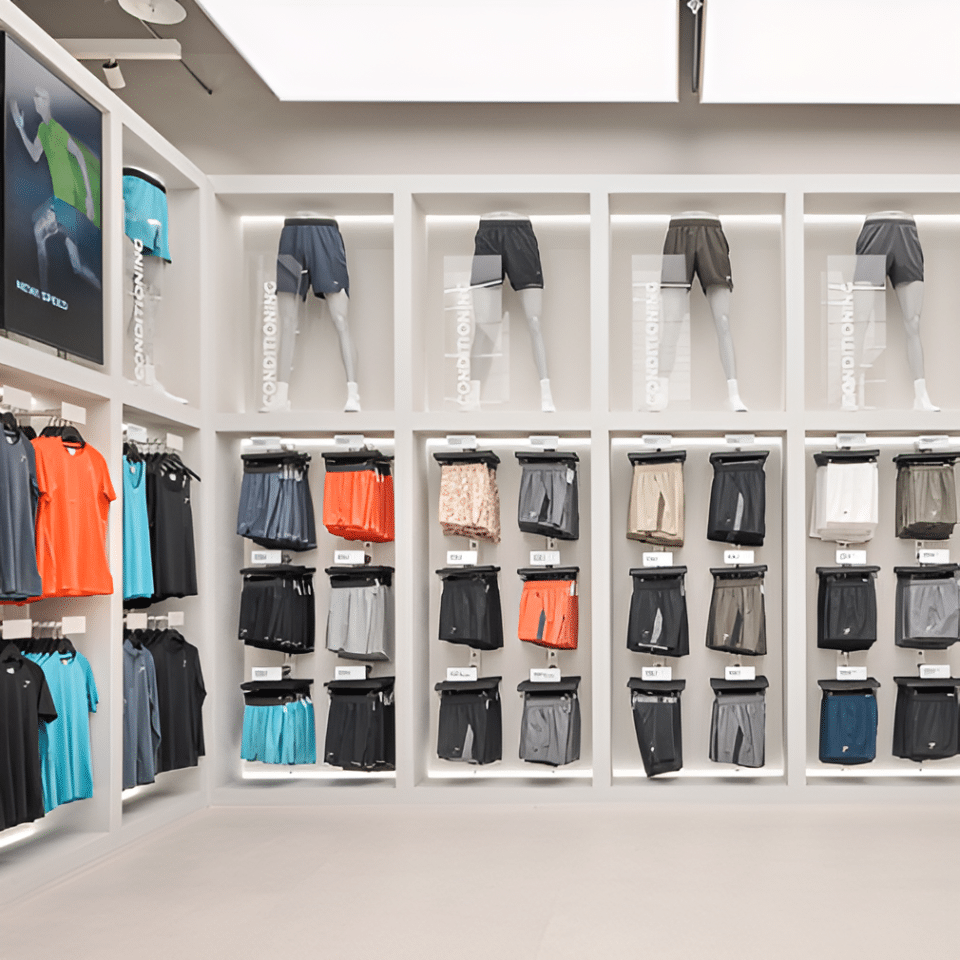Why Partners & Spade is the perfect partner for brands looking to push the definition of retail

If you had to name the ecommerce-born brands that were making the biggest waves in physical retail, Warby Parker, allbirds and Sonos would probably all be near the top of the list. The other thing they have in common is they’re all clients of design/brand studio Partners & Spade.
Unlike some design companies, Partners & Spade has a genuine understanding of retail having operated its own store in the early days. Today it’s a sought after partner for brands that began life online who are looking to disrupt the old way of doing things.
Ted Galperin, Design Director, Retail, tells us how Partners & Spade challenges traditional design ideas and why he wants to see the store go ‘less four walls’:
Ted Galperin, Design Director, Retail, Partners & Spade
Can you describe Partners & Spade in a nutshell?
We’re an 11-year-old design studio. What’s interesting about us is that we actually started as a store in a conceptual project. Not only did we sell things, but we had events and we had takeovers from artists. A lot of that stuff is commonplace now, but at the time it was unusual.
Today our business is in three parts. The first is traditional advertising. We did Wholefoods’ first ever advertising campaign in 35 years and Peloton’s first ever ad. The second part of the business is branding where we help companies develop a name and identity for things like their new product lines. The third part is retail, which I run. Although we’re a small company, we’re really able to think about brand in a holistic way.
We love to help companies solve problems. I think where we succeed the most is with brands like Sonos who have been selling in partner retail and online, but then want to have their own retail. With Warby Parker it was the same thing. They were an online retailer who wanted to try doing a physical store. At first it was in their marketing budget, but they gained so much insight into consumers, as well as it being a real revenue generator, that they’re now at about 70 stores.
Most of the time our clients have started online and done a pop-up or two. They have a little bit of learning that they have developed and they may know what size store they want and where they want it to be, but beyond that they are pretty open. It’s people who really have ambitions to do something different in the marketplace instead of reskinning it. I think that’s where our sweet spot is and what we’re always on the hunt for in terms of the clients we take on.
Who are you working with?
Allbirds was a really great experience. They have amazing leadership. Their CEOs are some of the best clients we’ve ever worked for. They’re a brand that understands quality and delivering a truly different experience by blowing up the idea of what a shoe trying-on experience could be.
It was about a 10-month project from kick-off to completion to develop two flagships for them in San Francisco and New York. We landed on this idea of the perfect try-on experience. We knew from consumer insights that the second people put these shoes on their feet the path to conversion was really high. If people tried on the shoe, they more than likely bought them.
One thing we developed is what we call the ‘perfect try-on chair’. We went through a big design process to figure out exactly what that was. When you go to tie your shoes you lean down in a chair to reach your foot. So we asked ‘what if our chair could actually tilt with you?’ That made that experience integral in the design of the chairs.
At the same time, we knew that one of the biggest pain points for customers in trying on shoes is the time spent waiting for a sales associate to fetch them. Often they come back and they say they don’t have your size or the colour you wanted. You’re left not really getting what you want which is not a great experience. Traditionally inventory is hidden, but in the allbirds stores we actually put it out on the floor in the back. You see everything beautifully lined up and it almost feels like an atelier or factory.
Allbirds had just done their own redesign of their shoe boxes which have a coloured panel on the front which indicate what colour the shoe is as well as the size. We celebrated this thing which other shoe companies may have hidden and designed the whole shelving unit around it, so the time between picking out your shoes and getting them on your feet is as little as possible.
Do you think the different arms of the business help you be more creative?
I think that’s why clients are really happy at the end because they get that we understand brand in an intimate way rather than just a superficial way. We know that customers are becoming savvier in understanding when a brand is really expressing itself through every customer touchpoint. We suss out and get everyone on the same page as to what the DNA of that brand is and then we use that DNA as the check and balance for every idea – does the solution we’ve come up with really support that?
The store becomes a temple to that brand. It’s like when you write a book and then it becomes a movie. When you’re working with these direct to consumer brands that exist online and they show up in physical space it really becomes a full colour representation of this thing that maybe you only experienced as a website or on Instagram. That really excites people.
I think one of the coolest things about working with Warby Parker is the comments on their Instagram like ‘please come to my town’ or ‘I’m so happy we finally have a Warby Parker store’. That’s a special thing and we really take that seriously.
The old retail model saw you drop stores everywhere and it was a homogenous experience that didn’t really speak to the community that the store was in. With Warby Parker and allbirds we really tried to figure out a way to bring in some element of that community or city in a genuine authentic way.
With Warby Parker we’ll have a local artist paint a mural on either the inside or the outside of the store. With allbirds 20 percent of the store has moments that relate to the location. For instance, in the San Francisco store we had this idea of using the Golden Gate orangey red color so that element shows up in some of the chairs and part of the structure of the building. Each of the cash desk wraps at the back have a unique design that’s based on that community. In the Manhattan store it’s Manhattan bedrock, but in the San Francisco store we actually used reclaimed supports from the old pier that was replaced.
Is flexibility more of a focus now in briefs from clients?
I think like consumers clients are getting more savvy. I think a lot of these modern challenger brands are now incredibly well funded from a very early point. There’s a lot of ambition to stand out in the marketplace. These clients are really growing rapidly and we want to make sure that we’re setting them up for success.
Modularity was something that very early on allbirds said they wanted to make a big feature of in the stores because they didn’t know what categories they were going to get into. We wanted to make sure that we could be as nimble as they are.
When we started with allbirds they had two types of shoes. Now they have six types of shoes and each of those has five or more colours. We knew that they were going to grow, but we didn’t want to design a store that felt like we were designing for the future with a bunch of empty shelves.
We designed a completely modular shelving solution that clicks together. All the tiles on the wall can be changed about, so you have the ability to expand or contract the product line. We can also develop new modular tiles for whatever new category they want to get into. For example, if they did a collaboration with an apparel brand and they needed T-shirt hangers we’d be able to accommodate that without having to reinvent the whole wheel.
It also speaks to who they are as a company because their whole ethos is make it, break it and remake it. They made 33 prototypes before they even landed on their first shoe. They want to make sure that their retail has that same feeling. Even now they’ve taken on the chairs that we designed in wood and figured out how to make them in cork and other materials.
Allbirds see themselves as a material innovations company rather than a sneaker company. They’re really trying to figure out how they can make the world’s most sustainable sneaker. That’s a lofty goal but people don’t buy sneakers because they’re sustainable, they buy sneakers because they love them. We really wanted to strike that balance between telling that story about sustainability with the love affair of just putting them on your feet and seeing how comfortable they are.
A lot of our clients are also looking at ‘dark stores’ – mini non-customer facing distribution centers that allow for an incredible amount of inventory to be nearby so they can replenish the store if they need to but are also able to take on more interesting retail.
How tech-enabled are the allbirds spaces?
There isn’t customer facing tech. It’s actually a bit more hidden. I think people have enough screens in their lives that they don’t really need it. Also, with the way technology is changing so quickly building tech into stores always ends up feeling dated very quickly. We don’t really like to design around that.
What we do love is storytelling. In the allbirds stores when you first walk in there’s a big wall with these vignettes where each of the shoes has been translated into the materials they come from. For instance, the shoelaces are made from old plastic bottles, there’s recycled cardboard for the boxes. You understand that there is a material story as well.
Are your clients thinking about how to marry the store and smartphone more?
I think that is where things are going. It’s like the circular at the grocery store that says what’s on sale that week. That’s really the same thing as having a smartphone in your hand. You’re using it as a tool to navigate the space and help you save money or learn about new products.
I think ideas where that really comes as a natural fit are great. What I hate is when it feels clunky and a bit forced. We want to make sure that we’re doing things that feel genuine to the brand and also aren’t making our customers’ lives more complicated. If it does something for evolution it stays around, but if it feels superfluous it just goes away.
The best state is a customer talking to a knowledgeable, warm person that says great things about the brand and helps evangelise what makes this product so great. If we can’t do that, what’s the next best step?
We worked with healthy food company Sweetgreen on an 18-month project. They only use farm partners from the surrounding area, so you are eating local produce, and their leadership team is really committed to interesting, complex flavour profiles. One of the things that we were working on with them was figuring out how technology could play a bigger role when you weren’t talking to a person.
Companies like Shake Shack have done a great job with their app and the digital kiosk in-store to be as frictionless as possible. You can order on your phone and go pick up. You can come into the store and quickly checkout on the kiosk, or if you want there’s a person who can take your order as well. When there’s that choice and you’re not forced to do it one way that’s for the best.
I think that ultimately, especially because customers are often already familiar with that brand online, having things that really are engaging in person is where our interest is. When we worked with Sonos we developed these listening rooms, so that customers could simultaneously trial the speakers.
At the same time, the Sonos UX team designed an app that would help to tell the brand story and the advantages of Sonos like being able to connect to multiple rooms in the house. The walls of the listening rooms each represent a different room in your house and then the app helps support that by explaining how you could connect those rooms.
What are your thoughts on the future of retail space?
I would want stores to go less four walls. It’s hard to tell that to people in real estate. There used to be a lot of infrastructure to check someone out and I think one thing technology is doing for retail is eliminating a lot of that bulk. I really enjoy pushing clients and brands to see what are the minimal amount of things we need to define a ‘store’.
I really love the idea of being out living your life and then you stumble upon a retail experience rather than the traditional model of going to a high street or going to a mall where you feel forced down this shopping tunnel. I love the idea of being on the outskirts of a park or at your favorite concert and there could be some sort of retail experience that really helps explain what the brand is where you’re also able to buy something.
I love when brands show up in places where their community is. There really is an opportunity where retail is not just the act of buying, but a way of creating a memory. For me that’s the ideal place that retail is going. I liken it to running a marathon and someone handing me a water. It’s part of your journey. It’s not a destination. I think retail can do the most good when it’s the value added rather than it being the whole purpose.
Do you feel like the average lifespan of a retail store design is changing?
With one of our clients we’re actually redesigning the first store that we ever did for them. That’s really interesting because the first store is an outlier for their brand. They now have more requirements as to what needs to happen within a store for it to be part of their retail fleet. We’re going back and helping them tweak it.
One trend is that people are doing pop-up’s first to see what works and what doesn’t work. It’s a lot more iterative in the beginning and then they get into physical retail. They’re also building modularity and flexibility in the design, so that the whole store doesn’t need to be redesigned but only the part that’s changing. It makes financial sense, but it also speaks to a brand being nimble and responding to the market.
I think that’s one of the things that these younger modern challenger brands are doing that makes them a lot better than the people they are competing against. They know that things change really quickly, and they know that the need of a store changes really quickly. Being able to tweak it and adjust it and break it and fix it and remake it is something that is not something scary for them but just the cost of doing business.
They know that the first three stores are probably going to cost more, but they know that they need to get out there and that they can figure out where to save money later. They don’t have to overengineer it in the beginning to the point where it’s diluting the core idea in the first place.
With allbirds we designed this beautifully crafted chair for them. They knew that the price per unit and the materials used were not what they would end up using long-term. They knew that down the road they’d come up with a new material or a new way of making it that would serve them in the long run.
But rather than adding on an extra six months of development to make that chair as cheap as possible in the beginning they said ‘let’s get out there and open and then we’ll figure it out for store number four or five’. There isn’t that pressure for every store to look like a cookie cutter of the one next to it whereas I think that old brands used to feel that way.
For more thoughts on how the store might change see what these 17 experts has to say about retail design in 2025. Or explore the very best that New York retail has to offer on one of our retail trend tours – get in touch to find out more.



